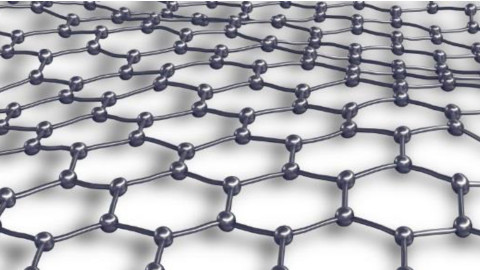The UAB takes part in the GraphCAT Community, dedicated to graphene research

With funding from the Government of Catalonia and the European Union, under the framework of the call "Comunitats Emergents RIS3CAT", a new project was recently launched under the name of GraphCAT, an initiative to create an ecosystem of research centres related with the study of graphene. The UAB will be involved in two of the project's initiatives: Graph-SIM and NeuroGraph.
The ultimate vision of the GraphCAT Community is to establish Catalonia as an international reference in graphene research, development and innovation, with multiple local industries deriving strong competitive advantage in the global marketplace through the integration of proprietary graphene technologies into their products and services.
GraphCAT will achieve this by cultivating a strong community of international graphene researchers, practitioners and businesses, bringing their combined expertise to the development of cutting-edge graphene technologies for and by Catalan industry. It will also provide support for the transfer of technology to industry, as well as the creation of spin-off companies.
Specifically, it will do so through GraphCAT projects, led by Community members and co-funded through the Catalan regional research and innovation strategy for smart specialisation, RIS3CAT.
The UAB will take part in two of these projects: Graph-SIM, under the direction of Department of Electronic Engineering lecturer David Jiménez, and NeuroGraph, which will include the participation of lecturer Xavier Navarro from the Department of Cell Biology, Physiology and Immunology, and researcher at the Institute for Neuroscience (INc-UAB).
GRAPH-SIM – Simulation environment for hybrid graphene-silicon CMOS integrated circuits
During the last decade a great variety of devices based on graphene have been experimentally demonstrated; notably, p-n junctions, varactors, transistors, and barristors. By combining these devices with passive components, innumerable circuits could be designed for digital, analog and radio frequency (RF) applications, preferably in the form of an integrated circuit (IC). It is hoped that such circuits can be integrated into the silicon platform with the aim of increasing IC functionality, thus exploiting the unique properties of graphene.
In order to create such hybrid ICs that combine silicon technology with graphene technology, a simulation environment is required that allows calculating the electrical behavior of the circuits (including DC, AC response, transient analysis, and noise analysis) with a result consistent with experimental measurements. The availability of such an environment is a precondition of the manufacturing process. Given that such an environment already exists for silicon, our proposal is to take advantage of this advance and add the ability to simulate the circuits made on the graphene platform, including the hybrid simulation of the circuits on both platforms.
The state of the art in compact models oriented to technology based on graphene considers the main physical effects. For the simulations to be realistic, various non-idealities must also be considered, such as the effects caused by the extrinsic network of the device, the effect of the charges trapped in the dielectric materials and in the interface with the graphene, the effect of self-heating, short channel effects, inertial effects of carriers, and the effect of low and high frequency noise.
The project is led by the UAB (experts in compact models of graphene devices), and has the collaboration of ICN2 (with extensive experience in the manufacture of graphene devices and circuits) and Keysight Technologies (a company recognized worldwide for offering simulation environments in various technologies).
NeuroGraph – Monitoring of cortical depolarization in neurointensive care using graphene microtransistors.
The brain activity spans over multiple temporal and spatial scales that requires a set of technologies to advance in its understanding. Electrophysiology is consistently used to measure the brain activity due to the electrical nature of neuronal activity, and requires of an efficient transducer to record the voltage drop caused by ionic transmembrane currents in the brain tissue. Passive metallic electrodes are the most commonly used transducers.
Alternatively, thanks to their unique set of properties, graphene enables the implementation of the so-called graphene based solution-gated field-effect transistor (gSGFET) as novel transducer for neural signals. The use of gSGFET is able to overcome the limitations of passive electrodes in DC coupled operation, enabling the recording of infra-slow activity (ISA). Among ISA activity, the Cortical Spreading Depression (CSD) is produced by a massive neural depolarization which is related with some neurological disorders such as migraine, epilepsy or traumatic brain injuries.
The monitoring of CSD events is hampered by the limitations of current recording technology based on passive electrodes, the use of gSGFET will improve the monitoring capabilities of CSD events and may serve as diagnostic, prognostic, and treatment monitoring tools for some of these neurological disorders.
The main objective of the project is advance in the translation of gSGFET technology to the clinical practice, by carrying out for first time a clinical assay in patients with traumatic brain injuries.
This activity is co-funded by the European Regional Development Funds (ERDF) allocated to the Programa operatiu FEDER de Catalunya 2014-2020, with the support of the Secretaria d'Universitats i Recerca of the Departament d'Empresa i Coneixement of the Generalitat de Catalunya for emerging technology clusters devoted to the valorization and transfer of research results (GraphCAT 001-P-001702).






